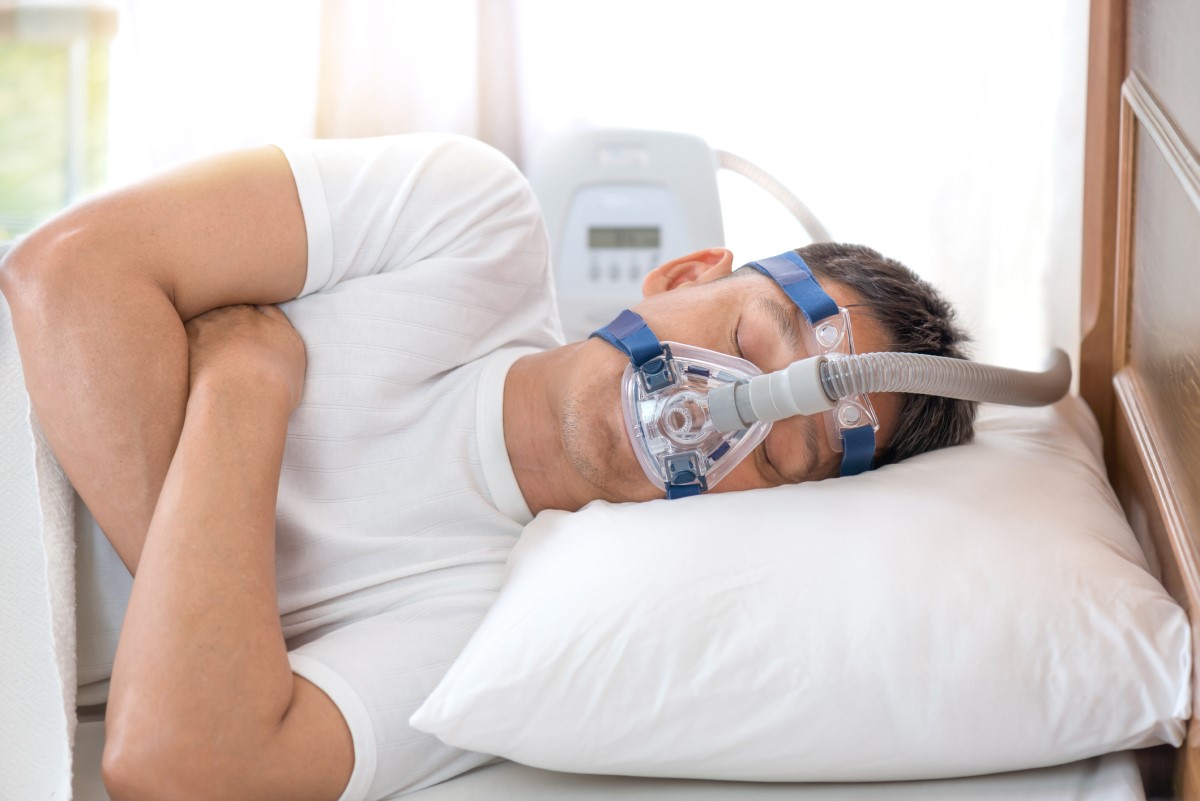Treatment of sleep apnea syndrome: drugs, weight and devices
Quitting smoking, drinking alcohol before bed, taking myorelaxants and sleeping pills are also important changes.
Regular exercise can also relieve sleep apnea symptoms. Even 30 minutes of moderate activity a day, such as brisk walking, can be beneficial.
When sleeping, lying on the side or on the stomach is recommended. A proven tip for not rolling onto your back is to roll a tennis ball under your pyjamas, for example. Special vibrating pads that vibrate when the patient rolls onto their back can also help.
For known allergies, allergy treatment and removal of the allergen from the environment is recommended.
Instrumental treatment of sleep apnoea
For moderate and severe forms of sleep apnea, it is advisable to use a special device to help improve breathing during sleep.
Continuous positive airway pressure (CPAP)
This device is used only during sleep. The principle of its therapeutic effect is to deliver air at a higher pressure than the ambient air pressure.
Overnight, a mask is placed over the face, through which the patient breathes in this high-pressure air. Because the air in the airways puts more pressure on the surrounding tissues, it keeps the airways open at all times. This prevents snoring and apnoea.
CPAP is the most common and reliable method of treating sleep apnea. However, many people find it uncomfortable to wear a mask over their face and cannot fall asleep with it on.
Many patients therefore give up using the CPAP machine, but with patience and practice, most people eventually learn to use the mask and to adjust the tension of the straps on the mask correctly, for example.
There are many mask shapes and also pressure levels of the CPAP machine. If snoring or apnea reoccurs while using the machine, simply readjust the pressure level of the air the machine is blowing into the airways.
There is also a device on the market that measures the airway pressure and automatically adjusts the pressure of the air the patient inhales. It is called auto-CPAP.
There are also devices with two levels of airway pressure, called BPAP. These work with more pressure when inhaling to keep the airway open, and conversely provide less pressure when exhaling to make it easier to breathe out.

Adaptive Servo Ventilation (ASV)
This is a relatively new treatment. This device uses airflow in the same way as other devices. It differs in that it "learns" the patient's normal breathing pattern. It processes and stores this information in a built-in computer.
When the patient falls asleep, the device uses the evaluated information and adjusts the air pressure to normalise the pathological breathing pattern. In this way, it prevents apnoeic pauses during sleep.
Oral appliances
Another treatment option is wearing an oral appliance. It is designed and custom-made to keep the throat open and the airway clear.
For example, they are designed to move the lower jaw forward. This helps keep the throat open and prevent snoring and mild obstructive sleep apnea.
The appliances are designed and manufactured in collaboration with the dentist, who then monitors the oral health and suitability of the appliance at regular check-ups during treatment.
Treatment of central sleep apnoea
Treatment of chronic health problems
Common causes of central sleep apnoea are mainly heart or neuromuscular diseases. Early and correct treatment of these diseases can also alleviate and cure central sleep apnoea.
Supplemental oxygen devices
This involves the use of breathing machines that are used during sleep and enrich the air with oxygen. Breathing air with a higher concentration of oxygen can help relieve central sleep apnea.
Surgical treatment
Surgical treatment is another treatment option. It is usually resorted to after conservative treatment has failed.
Generally, three months of conservative treatment is recommended before considering possible surgery. However, some patients suffer from anatomical obstructions in the airway. In this case, surgery is the first step in the treatment of sleep apnea.
Radiofrequency ablation
This involves removing tissue from the back of the mouth and throat using radiofrequency ablation. It comes into consideration if the patient does not tolerate CPAP or oral appliances.
Another option is to simply shrink the tissue in the back of the mouth and throat using radiofrequency ablation. This method is preferred for mild to moderate forms of sleep apnea.
Movement of the jaw
In this surgery, the lower jaw is moved forward against the rest of the facial bones. This creates more space behind the tongue and soft palate.
A freer airway means less chance of difficulty breathing during sleep when the walls of the throat relax. The operation is called maxillomandibular advancement.










